Rouen to Pont de l’Arche
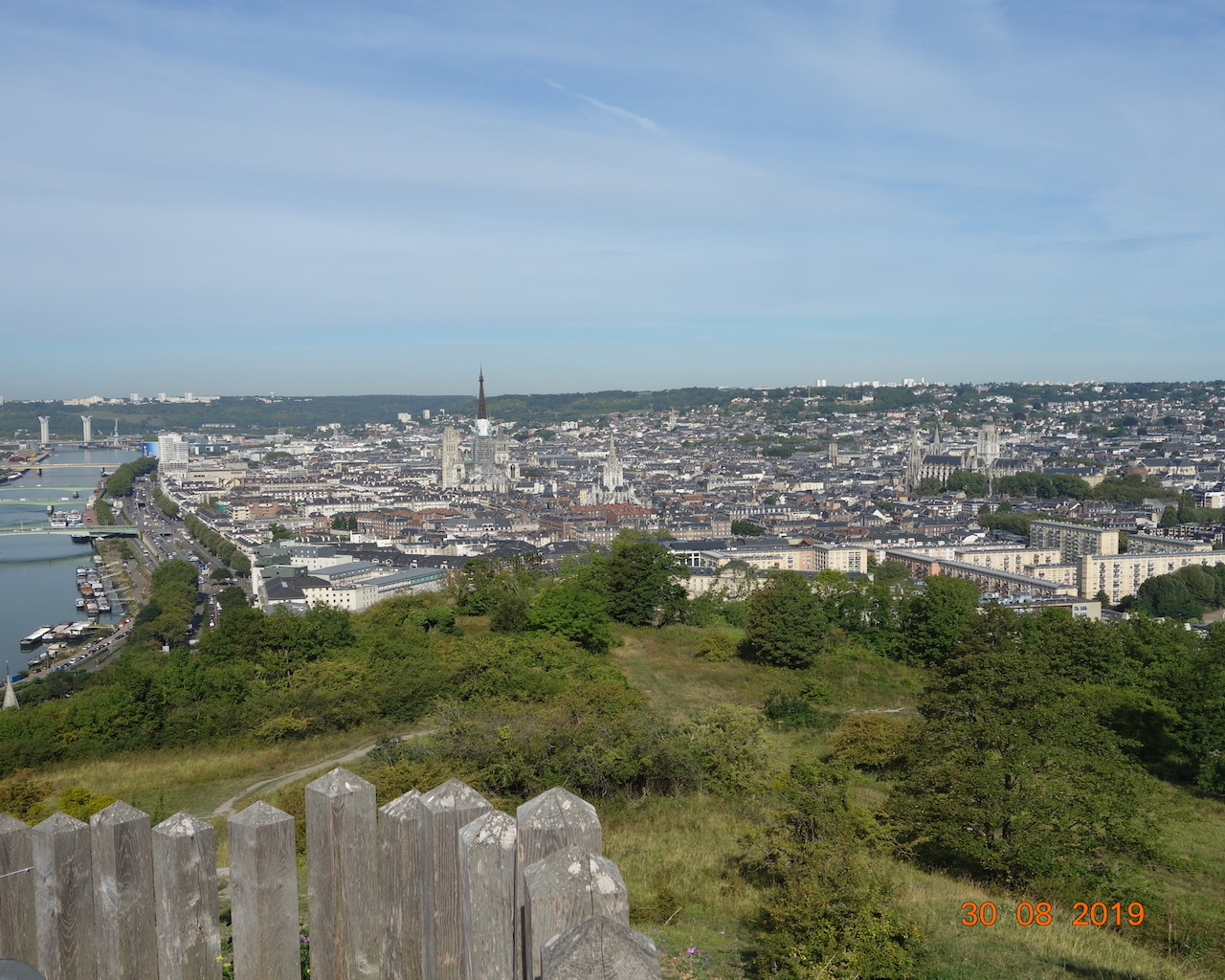
Normandie
3. Rouen to Pont de l’Arche
Medium
7h
25,9km
+590m
-589m
Step
Embed this item to access it offline
During this stage we will see, as we move away from the Rouen conurbation, the industrious valley gradually change towards more rural aspects, before finding, by crossing the Seine and the Eure on a single bridge, a very busy area.
7 points of interest
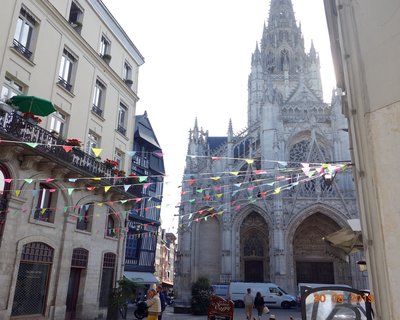
Façade de l’église Saint-Maclou de Rouen - Association Colomban en Brie TouristSaint-Maclou Church à Rouen
Malo or Maclou, Breton bishop, he would have been born in Wales when he was inspired to evangelize the Bretons not far from the city of Aleth (Saint-Malo) which now bears his name. He continued his peregrination towards Aquitaine and it is in Saintonge that he ended his earthly pilgrimage. Legend has it that Maclou went to Luxeuil to meet the monk Colomban.
The construction of this church, considered by art historians as a jewel of flamboyant gothic art, began in 1437. It has a famous 5-porch portal decorated with magnificent carved wooden doors dating from the Renaissance. The church has interesting furnishings: a flamboyant Gothic staircase, a beautiful Renaissance organ case as well as a rood arch and 18th century baroque confessionals. The bombings of 1944 severely damaged the tower on the transept, now restored the ensemble has regained its past splendour.
More information: Wikipedia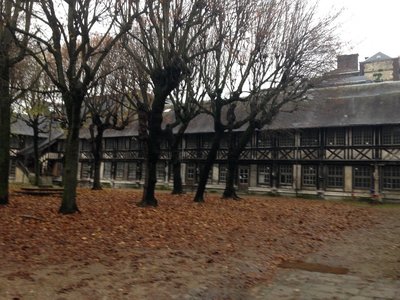
La cour de l’Aître Saint-Maclou de Rouen - Association Colomban en Brie HistoricalL’Aître Saint-Maclou
The Aître Saint-Maclou bears witness to the great plague epidemics that ravaged the city. It is one of the rare mass graves cemeteries existing today. This cemetery is part of the Saint-Maclou parish, whose church is nearby. The entrance to the porch is located near the chevet of the Saint-Maclou church. The creation of l'Aître dates back to the black plague of 1348 which struck Europe. The site succeeds the old 13th century cemetery which had become too cramped. A new plague epidemic in 1521 made it necessary to increase the cemetery's capacity by building an ossuary consisting of three galleries arranged around the mass grave. The bodies are deposited in a common pit with lime, after putrefaction the bones are deposited under the roofs of the galleries of the ossuary. In 1779 the Normandy Parliament ordered the abolition of cemeteries in towns, the Aître is closed. In the 17th century a new building was built in the south to enclose the cemetery courtyard. The building is a school for poor children it will be closed in the early twentieth century. L'Aître became the property of the city of Rouen which will install a museum of Norman art.
The half-timberings are richly sculpted and the whole offers a beautiful architectural harmony.
Restoration work began in 2018.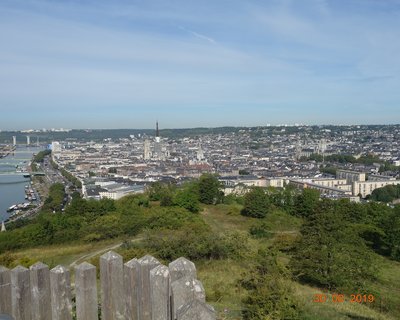
Vue panoramique de Rouen depuis la côte Sainte-Catherine - Association Colomban en Brie PanoramicLa Côte Sainte-Catherine à Rouen
This hill, 140m. high, is located on the Via Columbani at the exit of the Rouen conurbation and offers you an exceptional panorama of the capital of Normandy, when the weather is fine.
Claude Monet, in 1892 painted "General view of Rouen" from this point of view. Here he created a colourful work of uncertain forms, where only Notre-Dame cathedral and Saint-Maclou church stand out.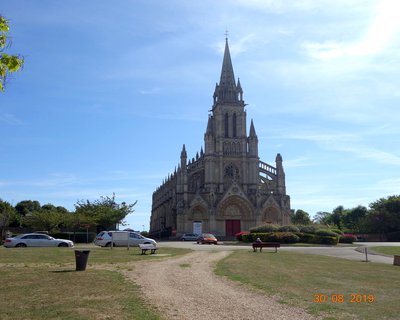
Basilique Notre-Dame de Bonsecours - Paroisse de Notre-Dame de Bonsecours TouristNotre-Dame de Bonsecours à Rouen
The Marian pilgrimage of Notre-Dame de Bonsecours is the only one in Seine-Maritime. It dates back to the Middle Ages and its history is recounted on a marble plaque hung on the porch wall.
The basilica of Notre-Dame de Bonsecours is located on the site of a pilgrimage dedicated to the Virgin. Designed by the architect Barthélémy, the first stone of the new building was laid on 4 March 1840. It is designed in the neo-gothic style, the first example of this style in France. Pope Pius IX honoured the sanctuary of Notre-Dame de Bonsecours with the privilege of coronation on 15 July 1870.
More information: Wikipedia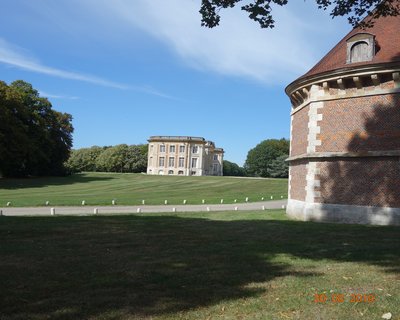
Château de Belbeuf XVIIIe siècle et la tour hexagonale du XVIIe siècle - Association Colomban en Brie HistoricalBelbeuf Castle
Jean Pierre Prosper Godart de Belbeuf, Marquis de Belbeuf, had this castle built in the 18th century, in place of a 16th century manor house, of which a polygonal tower remains. After the death of the last Marquis de Belbeuf in 1906 the castle changed ownership. Abandoned after the Second World War, it was bought at auction by the Anciennes Mutuelles de Rouen.
It is a private property that cannot be visited.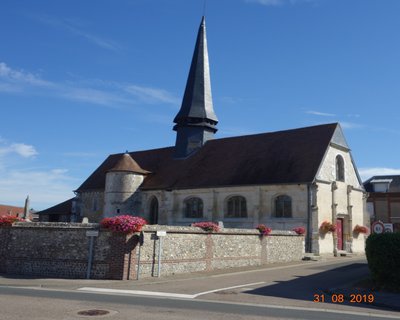
Église Saint-Saturnin, Les Authieux sur le Port Saint-Ouen - Association Colomban en Brie TouristÉglise Saint-Saturnin, Les Authieux sur le Port Saint-Ouen
It was under Philippe Auguste, around 1200, that Port-Saint-Ouen was chosen as the port of the abbey of Saint-Ouen in Rouen, and retained its historical importance during the 100 years war, and even later: General Bonaparte accompanied by his wife Joséphine de Beauharnais was received in the house of the citizen-mayor M Tallendier who was surrounded by the notables of Rouen who came to welcome the first consul at the entrance of the department.
The church of the Authieux, dedicated to Saint Saturnin, belongs to two different eras. The choir is a work of the 13th century as evidenced by the cornice and the lancets. The nave is a 16th century construction. The baptistery also seems to date back to the XVIth century.
At the beginning of the 20th century, 5 stained glass windows of the church were classified.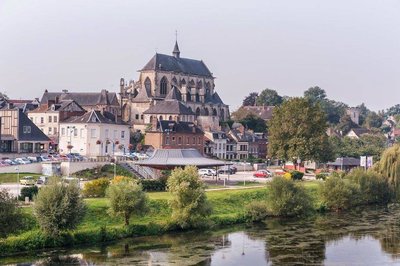
Église Notre-Dame-des-Arts à Pont-de-l’Arche - Association Colomban en Brie TouristNotre-Dame-des-Arts Church in Pont de l’Arche
The parish of Pont-de-l'Arche appears in a charter of Richard, Duke of Normandy granting in 1020 spiritual and especially financial rights (especially on river traffic) to the Abbey of Jumièges.
The town developed around the fortified bridge, a structure that allowed the collection of fees for the towing of ships and was historically an area of conflict between the kingdoms of France and England.
Notre Dame des Arts Church
Founded in the 16th century in the flamboyant Gothic style, the church of Notre-Dame-des-Arts in Pont-de-l'Arche contains great treasures: in addition to its very ornate southern façade, one can observe its beautiful stained glass windows from the 17th and 20th centuries, particularly the one representing the towing of the boats, the work of Martin Verel in 1605. Also worthy of note are the stalls from Bonport Abbey a little further downstream, the great organ donated by King Henry IV and the 17th century baroque high altar.
Description
Leave the square in front of the Saint-Ouen abbey by the rue des Boucheries Saint-Ouen, opposite you slightly to the left. Second street on the left, rue Damiette, left rue Martainville, along the north side of the Saint-Maclou church. Cross Boulevard Gambetta, in front of you, rue du Faubourg Martainville D95 across Place du Canada, go under the highway.
- At the exit of the bridge, take the stairs on the right, turn left, at the junction with rue Henri Rivière D95E on the right and on the left pedestrian path, côte Sainte-Catherine, stay on the path with stairs fitted out for pedestrians, at the crossroads straight ahead path with stairs along the hillside. At Panorama Sainte-Catherine cross the parking lot on the right, go down the road to the Corniche.
- At the small roundabout turn slightly right, avenue José-Maria de Heredia, after the roundabout of the José-Maria de Heredia school group, turn left on route de Paris, first street on the right, rue de la Basilique, first street on the left, rue Léon Lebourgeois, follow the red and white signs, cross Route Neuve D6014, rue de Corval.
- Turn right at the crossroads on rue des Perets, turn left into rue des Perets, cross allée du Mont Ager, continue on the path in the woods, Sente du Mont Ager, road and white markings, at the crossroads on the hill on the right, go down into the town on the left rue Raymond Soudain at the crossroads straight ahead, rue Robert Turquier, on the left rue du Huit Mai 1945, opposite chemin des Buissonnets, dirt road, allée du Noyer.
- After rue des Violettes turn right on chemin entre les allotments, cross rue des Écureuils, red and white markings, turn right on route de Mesnil-Esnard, right on rue des Canadiens D7, second street on the left, rue aux Sœurs, at the crossroads turn right on rue Pasteur, before the right turn of the street take the pedestrian path on the left, go down towards Saint-Adrien, on the left route de Paris
- At the bridge of the brook on the left in front of the town hall, chemin d'Ancarville in the forest, red and white markings, continue on a paved forest road, on the right, tarred road, rue d'Incarville, red and white markings, in a hairpin on the left of the road take on the right, paved road, then sentier aux Dames.
- Arriving in Gouy, turn right on rue des Canadiens, go down into the forest, go along the water treatment plant, in Le Port Saint-Ouen cross the road to Paris, rue des deux Communes, turn right on ruelle du Haut, red and white signs, continue on the stone road on the right at the intersection, rue de Gouy, turn left on rue du Clos Mouchel, cross rue du Dr Gallouen, rue de l'église, red and white signs, continue on the field path, staying on your right.
- Cross rue des Canadiens, chemin du Cloquetas, turn left onto D91, continue straight ahead on the dirt road on the left, go around the subdivision on the left, rue Sainte-Baulede, turn left at the entrance to rue Hyacinthe Langlois, take the dirt road on the right, at the intersection on the left with red and white signs.
- Turn left, go down towards the crossroads D92, rue du Village on the left, after the church on the right rue des Pré, continue on the dirt road, subdivision in Igoville, cross rue du Sablons, rue des Fondriaux, rue de Porrentruy, rue de Lyons D79, at the big roundabout, third street on the right, rue de Paris D 6015, take the bridge over the railway, straight ahead at the roundabout, stay on the D 6015, rue de Paris to cross the Seine.
- Exit the bridge on the right, cross the small parking lot, right staircase to quai de Verdun, left on quai de Verdun, third street on the left, rue de la petite chaussée, take stairs on the right, sentier de Beauregard, you arrive on the square in front of the church Notre-Dame des Arts in Pont de l'Arche.
- Departure : Saint-Ouen Abbey, Place du Général de Gaulle, 76000 Rouen
- Arrival : Notre-Dame-des-Arts Church, 8 Place du Marechal Leclerc, 27340 Pont de l’Arche
- Towns crossed : Normandie
Altimetric profile
Report a problem or an error
If you have found an error on this page or if you have noticed any problems during your hike, please report them to us here:







